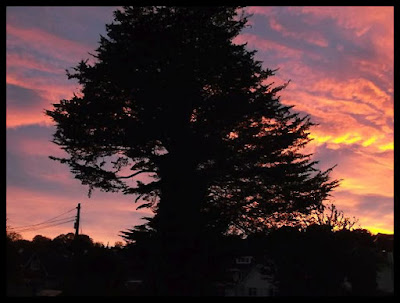This may come as no surprise but there's been a change of plan. ;) I really wanted to finish the one I promised before the end of the month but it's going to take a lot longer, so I'm posting this much shorter one instead.
A lot of the photos are too bad to include and although I'd love to go back and take better ones I can no longer manage the walk. However, the ones I've included give an idea of how lovely this woodland is and some of the uses it was put to in the past. So this is going to be much shorter than intended. If I can revisit in the future I'll re-do the whole post. One can but hope, lol.
This is a wonderful place for a walk. A plantation of trees belonging to the Clinton Devon Estates, it has been left for nature to take its course and is now mature and full of undergrowth and woodland plants with public footpaths running through it.
The first few photos are of the last bit of the walk here, with the tree plantation stretching along the roads.
Couchill has some interesting history, as it is thought that a 3rd or 4th century Roman fort was built here - connected to the Legio Augusta II in Exeter due to tiles found bearing their inscription - although likely to be auxillary or fleet rather than a legionary fort.
Across the main Seaton Down Road and slightly south west is the nearby Honeyditches where a Roman villa was excavated. It is now thought to have been a mansio, which is really interesting. Mansios were the equivalent of a Bed & Breakfast for dignitaries and travellers on official business, carrying a passport giving them the right to stay in what were substantial villas.
Excavations showed the remains of a grape orchard on the southern hillside to provide wine for the guests plus a bath house along with the foundations of other stone buildings.
I visited the woods three times over several years, so the photos are somewhat different each time. I was told that there's an old reservoir here, which I subsequently found on the OS Map, but it must have been quite a walk through the woods and I gave up before locating it.
I did, however, find this on a walk around the lane circling the woods in 2007, seen below.
It's an old metal utility box. After some research, I discovered that it may have been an emergency phone box, now left abandoned and redundant due to the woods no longer being worked and/or the widespread use of mobile phones. To read more about this you can access the article here.
Lovely foxgloves amongst other wild flowers during a June visit in 2009.
And some other photos which were taken inside the woods, below.
This was a visit in April 2011 and the bluebells were out but the photos were too bad to include, along with some others along the walk to find the reservoir.
The photo below is looking back down towards the entrance gate.
Whilst there I took the opportunity to take a self portrait, leaving my camera halfway down the slope as I ran down to the gate to pose. Unfortunately, I didn't get there quick enough on the first try and was still trotting down the hill when it took, lol.
However, I managed to make it the second time where I did my 'wonder woman' power stance! ;)
And that's about all I've got for now. And if you think some of those photos are bad you should see the other ones! The write-up was so much easier to do by cutting it very short though, and I'm glad I managed to include it on the blog after all.
I'm not going to promise which one's coming up next, as the best laid plans of mice and men seem to go all awry for me lately, but I'm still working on Fore Street in Beer village. Although I haven't set up my new scanner yet, I expect to do so soon when I'll be able to scan the new photos of the infant school and master's cottage for their own article.
And just in time before the new month. Yay! Cheers everyone, and hopefully I'll be posting a bit more often now. Or have I just jinxed it by saying so? Oops!




































